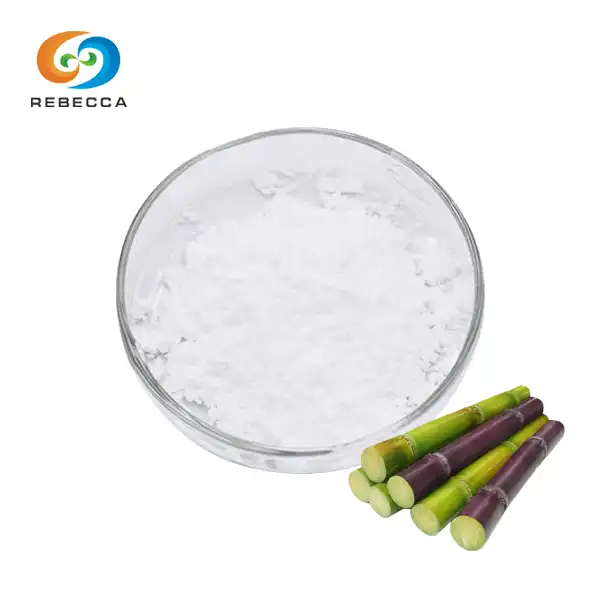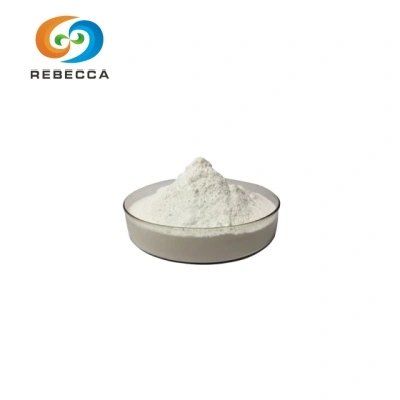What Is Baicalin?
Baicalin powder is a common substance found in the roots of a plant called Scutellaria baicalensis, or Baikal skullcap. It's a compound that has ended up well known because of all the potential well-being benefits it might offer. You can discover it in the frame of a pale yellow powder, which comes from the plant’s roots. The powder has a somewhat sharp taste, and it’s made up of two parts: a flavonoid (a kind of antioxidant) and a glucose atom, which makes a difference in our bodies assimilating it better. Baicalin has been utilized in conventional Chinese medication for an exceptionally long time, and individuals have depended on it for its anti-inflammatory, antioxidant, and brain-protecting effects. Nowadays, researchers are indeed more energized about what baicalin can do, and they’re finding all sorts of unused ways it might be accommodating in drugs, vitamins, and indeed skincare products. Because baicalin is a characteristic compound, it’s seen as a gentler elective to a few man-made drugs. It’s less likely to cause side impacts, but still capable sufficient to offer assistance in numerous distinctive ways. Scientists are particularly interested in how it can impact the body on a more profound level, which seems to lead to modern, more beneficial items in the future.

Chemical Properties And Structure Of Baicalin
Molecular Composition And Structural Features
Baicalin's chemical structure is characterized by a flavone aglycone (baicalein) connected to a β-D-glucuronic corrosive moiety. This special course of action contributes to its water dissolvability and natural exercises. The atomic equation C21H18O11 speaks to its composition, whereas its orderly title is 7-D-glucuronic acid-5,6-dihydroxyflavone. The nearness of numerous hydroxyl bunches in its structure upgrades its antioxidant properties, permitting it to neutralize free radicals successfully.
Physical Characteristics Of Baicalin Powder
Baicalin powder, extracted from Baikal skullcap root, exhibits distinct physical properties. It appears as a fine, crystalline substance with a color ranging from pale yellow to light brown. The powder is slightly hygroscopic and should be stored in airtight containers to maintain its stability. Its melting point ranges between 223-225°C, and it demonstrates good solubility in alkaline solutions and certain organic solvents.
Spectroscopic And Analytical Properties
Distinguishing proof and quality control of baicalin include different spectroscopic and expository methods. UV-Vis spectroscopy ordinarily appears greatest assimilation crests at around 275 nm and 316 nm, characteristic of its flavonoid structure. High-performance fluid chromatography (HPLC) is commonly utilized for quantitative investigation, whereas mass spectrometry gives point by point auxiliary data. These strategies guarantee the immaculateness and consistency of baicalin powder in commercial items.

Biological Activities And Therapeutic Applications
Anti-inflammatory And Antioxidant Effects
Baicalin's powerful anti-inflammatory properties stem from its capacity to repress key provocative go-betweens such as NF-κB and COX-2. This activity makes it important in overseeing different incendiary conditions, counting joint pain, and incendiary bowel infections. As an antioxidant, baicalin scavenges receptive oxygen species (ROS) and improves the body's endogenous antioxidant resistances, possibly diminishing oxidative stress-related harm in tissues and organs.
Neuroprotective And Cognitive Enhancement Potential
Inquire about has highlighted baicalin's neuroprotective impacts, recommending its potential in overseeing neurodegenerative disarranges like Alzheimer's and Parkinson's infections. It has been appeared to advance neuronal survival, decrease neuroinflammation, and progress cognitive work in preclinical considers. These properties make baicalin an captivating candidate for creating nutraceuticals pointed at cognitive upgrade and neuroprotection.
Cardiovascular And Metabolic Benefits
Baicalin exhibits promising effects on cardiovascular health by improving lipid profiles, reducing blood pressure, and protecting against ischemia-reperfusion injury. Its ability to modulate glucose metabolism and enhance insulin sensitivity suggests potential applications in managing diabetes and metabolic syndrome. These multifaceted benefits position baicalin as a valuable ingredient in developing comprehensive health supplements targeting cardiovascular and metabolic wellness.

Industrial Applications And Market Trends
Pharmaceutical Industry Utilization
In the pharmaceutical segment, baicalin's different pharmacological exercises have impelled intrigued in medicate advancement. Its anti-inflammatory and antioxidant properties make it a promising candidate for treating unremitting incendiary illnesses and oxidative stress-related disarranges. Pharmaceutical companies are investigating baicalin-based definitions for different signs, counting liver assurance, cancer adjuvant treatment, and neurological disarranges. The compound's common beginning adjusts with the developing request for plant-based pharmaceuticals, possibly advertising a favorable security profile compared to manufactured options.
Nutraceutical And Dietary Supplement Market
The nutraceutical industry has grasped baicalin as a key fixing in dietary supplements focusing on by and large wellbeing and wellness. Its antioxidant properties and potential cognitive benefits have driven to its consideration in anti-aging and brain wellbeing details. Health-conscious shoppers looking for common cures for push alleviation and resistant bolster have driven the request for baicalin-containing items. Producers are creating imaginative conveyance shapes, such as liposomal arrangements, to improve bioavailability and adequacy.
Cosmetic And Skincare Applications
Baicalin's antioxidant and anti-inflammatory properties have earned consideration in the makeup industry. It is progressively joined into skincare definitions for its potential to combat skin maturing, decrease aggravation, and ensure against natural stressors. Restorative companies are leveraging baicalin's common beginning to offer to customers looking for clean and green excellence items. Its capacity to tweak melanin generation moreover makes it a promising fixing in skin-brightening and anti-pigmentation items.

Baicalin Powder Supplier
At Rebecca Bio-Tech, we understand the critical importance of high-quality baicalin powder for your pharmaceutical, nutraceutical, cosmetic, or food applications. Our premium baikal skullcap root extract (CAS: 21967-41-9) meets the stringent quality standards demanded by these industries. We offer free samples and provide comprehensive documentation, including MSDS and COA, to support your product development and regulatory compliance needs. Experience the difference that our superior baicalin powder can make in your formulations. Contact us today at information@sxrebecca.com to learn more about our products and how we can support your business objectives.
References
- Zhang, L., et al. (2019). Baicalin and its metabolites: Pharmacokinetics, pharmacodynamics, and potential therapeutic effects. Pharmacological Research, 150, 104520.
- Liang, W., et al. (2017). Therapeutic effects of baicalin on neurodegenerative diseases: A review. Pharmacology & Therapeutics, 175, 138-156.
- Chen, H., et al. (2018). Baicalin attenuates oxidative stress and apoptosis in cardiomyocytes via the NRF2/HO-1 axis. Molecular Medicine Reports, 17(4), 5481-5487.
- Gao, Y., et al. (2020). Baicalin promotes the bacteriostatic activity of lysozyme on S. aureus through a synergistic effect. Journal of Microbiology and Biotechnology, 30(1), 102-109.
- Huang, Y., et al. (2019). Baicalin promotes apoptosis and inhibits proliferation and migration of hypoxia-induced pulmonary artery smooth muscle cells by up-regulating A2a receptor via the SDF-1/CXCR4 signaling pathway. BMC Complementary and Alternative Medicine, 19(1), 256.
- Li, X., et al. (2020). Baicalin attenuates alcoholic liver injury through modulation of hepatic oxidative stress, inflammation and sonic hedgehog pathway in rats. Cellular Physiology and Biochemistry, 54(1), 44-56.








